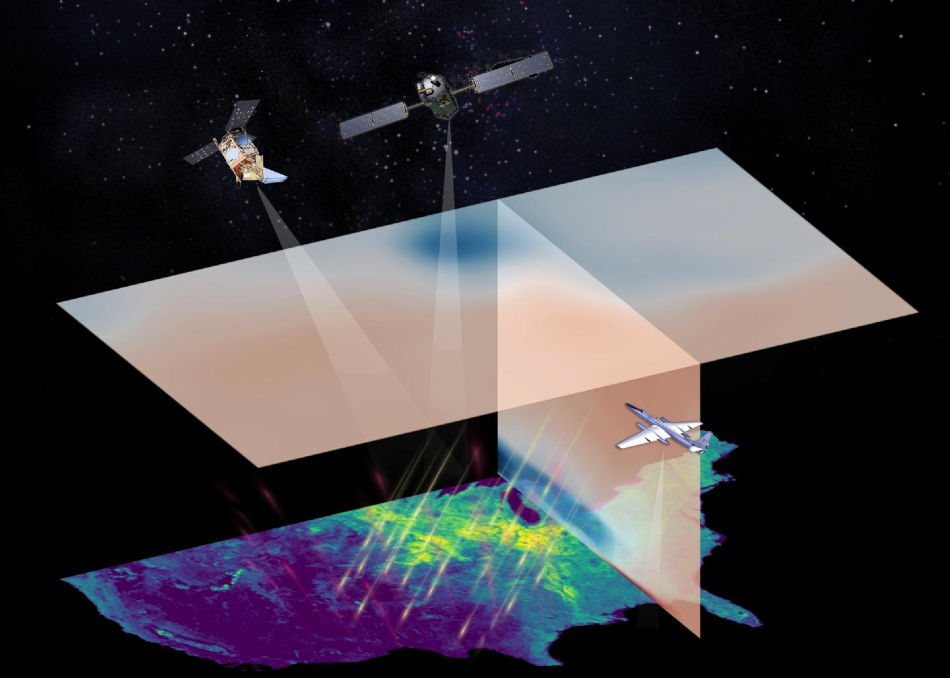Apr 3 2020
A new study reports that extreme flooding across the Midwest, which induced a delay in growing season for crops in the region, resulted in the decrease of net carbon uptake by 100 million metric tons in June and July 2019.

Image Credit: Caltech.
In 2018, the widespread California wildfires emitted approximately 12.4 million metric tons of carbon into the air.
According to the study authors, a part of this shortage caused by floods was later compensated for in the growing season, but the combined effects could have led to a 15% decrease in the productivity of crops compared to 2018.
The study was recently reported in the AGU Advances journal on March 31st, 2020, and explains how satellite data was used to measure the carbon uptake.
Using a novel marker of photosynthesis called solar-induced fluorescence, the team measured the decline in carbon uptake caused by the delay in crop growth. Then, independent observations of atmospheric CO2 levels were made to verify the decrease in carbon uptake.
We were able to show that it’s possible to monitor the impacts of floods on crop growth on a daily basis in near real time from space, which is critical to future ecological forecasting and mitigation.
Yi Yin, Study Lead Author and Research Scientist, Caltech
In the early summer and spring of 2019, record rainfalls drenched the Midwest. For three successive months (April, May, and June), the National Oceanic and Atmospheric Administration stated that 12-month precipitation measurements had beaten records.
The ensuing floods not just caused damages to home and infrastructure but also affected agricultural productivity, which led to a delay in planting crops in wider parts of the Corn Belt, extending from Kansas and Nebraska in the west to Ohio in the east.
Researchers at Caltech and JPL, which is managed by Caltech for NASA, resorted to using satellite data to evaluate the environmental effect of the delayed growing season. Plants transform sunlight and carbon dioxide (CO2) into energy and oxygen via photosynthesis, where a small amount of the absorbed sunlight is emitted back as a very faint glow.
Named solar-induced fluorescence (SIF), the glow is too dim to be observed with bare eyes. However, it can be measured with a process known as satellite spectrophotometry.
The Caltech-JPL group measured SIF by making use of measurements from a European Space Agency (ESA) satellite-borne instrument to monitor crop growth with unmatched detail.
It was found that the seasonal cycle of the 2019 crop growth was delayed by approximately two weeks and there was almost a 15% decline in the maximum seasonal photosynthesis. In 2019, the short growing season was predicted to have led to a decrease in carbon uptake by plants of around 100 million metric tons from June to July.
SIF is the most accurate signal of photosynthesis by far that can be observed from space. And since plants absorb carbon dioxide during photosynthesis, we wanted to see if SIF could track the reductions in crop carbon uptake during the 2019 floods.
Christian Frankenberg, Professor of Environmental Science and Engineering, Caltech
To determine the carbon uptake, the researchers examined atmospheric CO2 measurements from NASA’s Orbiting Carbon Observatory-2 (OCO-2) satellite and also from aircraft from NASA’s Atmospheric Carbon and Transport America (ACT-America) project.
We found that the SIF-based estimates of reduced uptake are consistent with elevated atmospheric CO2 when the two quantities are connected by atmospheric transport models.
Brendan Bryne, Study Co-Corresponding Author and NASA Postdoc Fellow, JPL
According to Paul Wennberg, “This study illuminates our ability to monitor the ecosystem and its impact on atmospheric CO2 in near real time from space. These new tools allow for global sensing of biospheric uptake of carbon dioxide,”
Wennberg is the R. Stanton Avery Professor of Atmospheric Chemistry and Environmental Science and Engineering and director of the Ronald and Maxine Linde Center for Global Environmental Science, as well as a founding member of the Orbiting Carbon Observatory project. Also, Wennberg is the principal investigator of the Resnick Sustainability Institute’s Climate Science Research Initiative at Caltech.
The title of the paper is “Cropland carbon uptake delayed and reduced by 2019 Midwest floods.” Co-authors of the study at Caltech are Junjie Liu, visiting associate in environmental science and engineering; Philipp Köhler, research scientist; Liyin He (MS ’18), Resnick Sustainability Institute fellow; Rupesh Jeyaram, undergraduate student; and Vincent Humphrey, postdoctoral scholar.
The other co-authors of the study are Troy Magney of UC Davis; Kenneth J. Davis, Tobias Gerken, and Sha Feng of Pennsylvania State University; and Joshua P. Digangi of NASA. This study was financially supported by NASA.